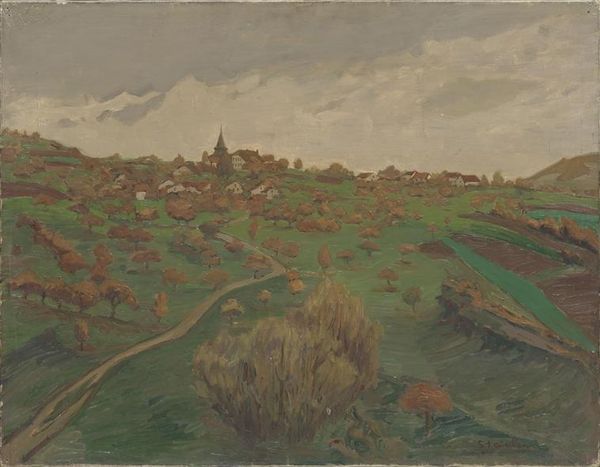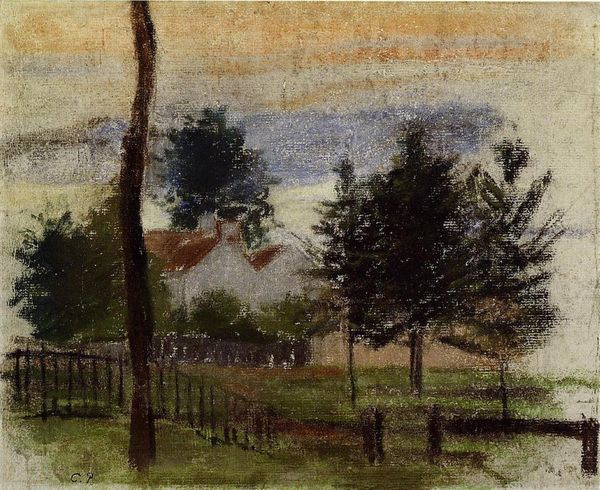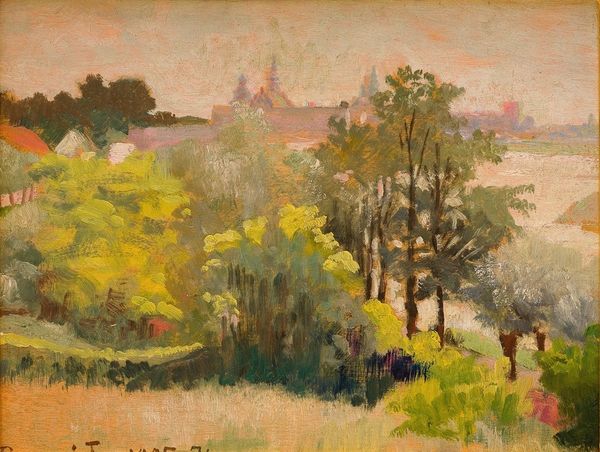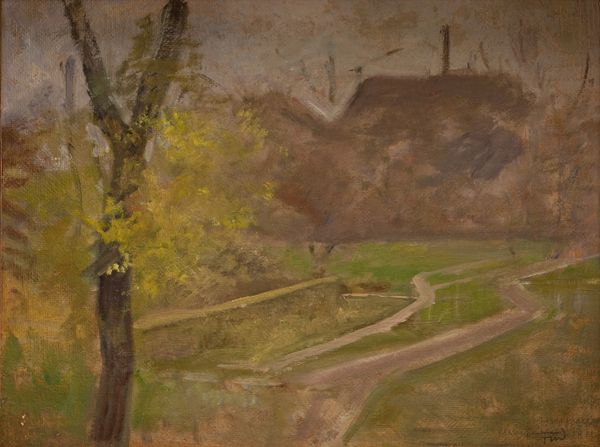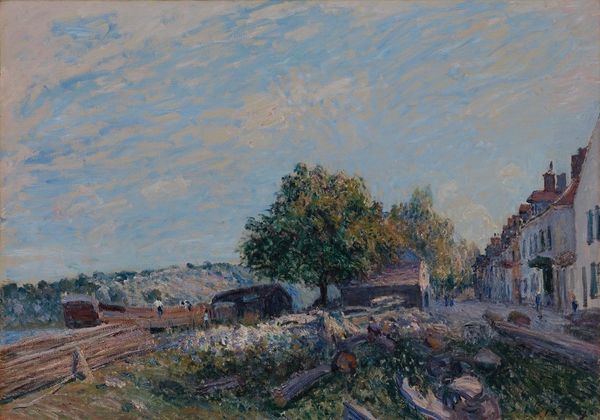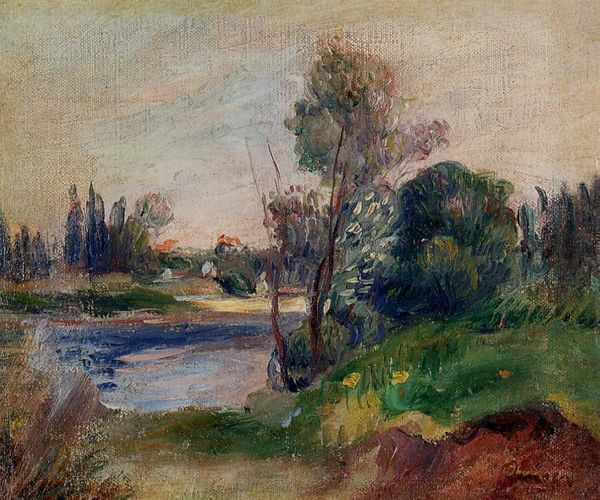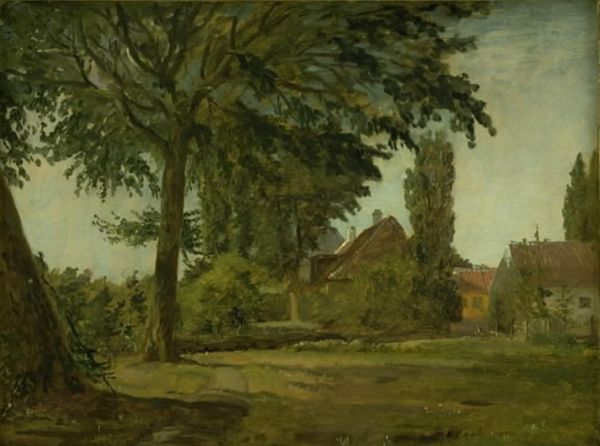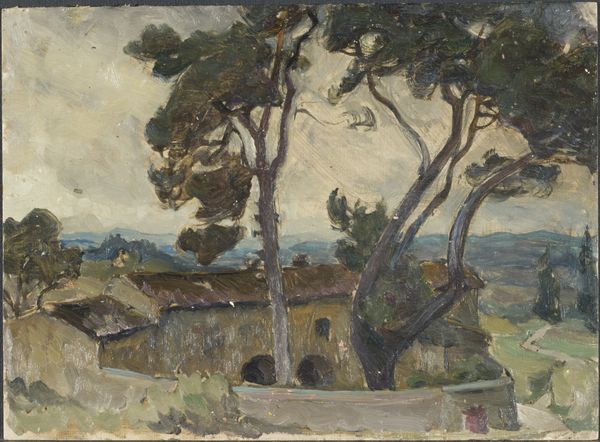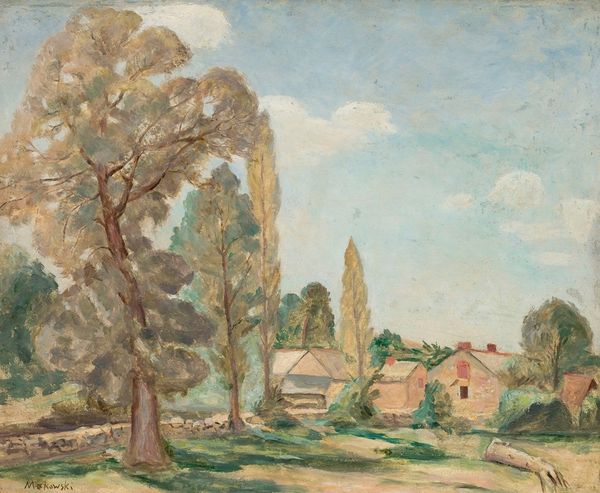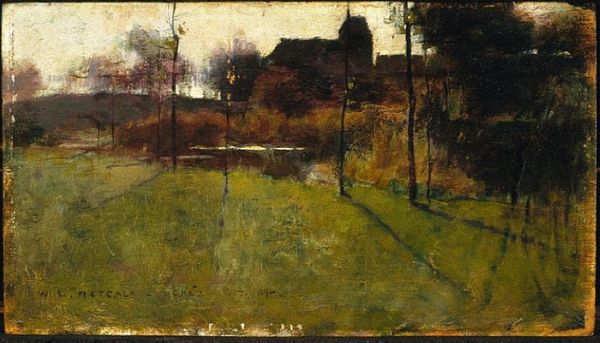
Dimensions: 25 x 29 3/4 in. (63.5 x 75.6 cm) [canvas]
Copyright: No Copyright - United States
Curator: This is Arthur Clifton Goodwin's "Landscape," created around 1908, and it resides here at the Minneapolis Institute of Art. It's an oil on canvas, showcasing Goodwin's plein-air approach. What are your initial thoughts? Editor: A prevailing stillness comes to mind, a certain melancholic quality. The muted colors contribute significantly to that mood. There's an interesting play of light but also of restraint in color usage. Curator: Absolutely. This piece arrives at a moment when American artists were grappling with defining national identity amid rapid industrialization and urbanization. Goodwin, painting en plein air, is positioning himself in a history of landscape, responding to these transformations. How might this perspective affect how we read such pastoral landscapes today, especially regarding class, leisure, and who gets to partake in experiencing the pastoral? Editor: Framing this as a reaction to industrialization immediately highlights the contrasting forms. Look at the brushwork: fragmented and dabbed, evoking a feeling of impermanence but with subtle rhythm and visual harmony through repetition of form. Curator: Goodwin occupied an interesting space socially; his African American heritage likely shaped his interactions with these landscapes, impacting what visibility and access were possible at the time, and it may very well inform our reading of his compositional choices and use of color and light. Editor: You're making me consider how my viewing is filtered by a lifetime of certain assumptions regarding canonical "landscape." It also shows the importance of acknowledging our positionality as viewers and critics when approaching these pieces, whether our response stems from historical insights or purely visual sensations. The work resonates differently for different viewers based on positionality, as you indicate, or it might not resonate at all! Curator: That's a critical point. By looking at art through lenses of gender, race, and socio-economic factors, we open to a much richer and nuanced interpretation, a discussion about power, access, and representation. It compels us to see and think beyond the aesthetic surface. Editor: It challenges my predominantly formal reading, demanding that I confront broader social implications embedded within even the seemingly tranquil scene. Thanks for highlighting the inherent social context embedded even within works that present as mere idylls.
Comments
No comments
Be the first to comment and join the conversation on the ultimate creative platform.
